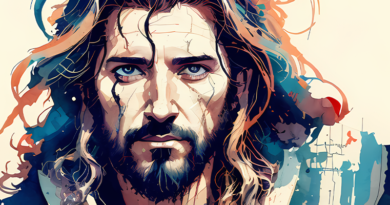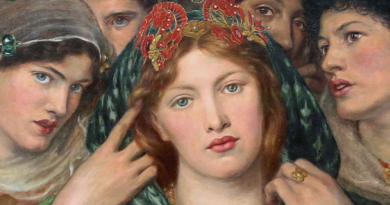Solar Eclipse As Inspiration For Christian Sacred Art
“It was now about the sixth hour and darkness fell over the whole land until the ninth hour, because the sun was obscured and the veil of the temple was torn in two”
– Bible, New Testament, Gospel according to Luke, Chapter23: verses 44–45
Despite its explainability, a solar eclipse has always caused and still causes both delight and fear at the same time. The drama of this phenomenon always shocks the emotional world of the observer.
That’s why the solar eclipse became a natural and logical background against which the most severe drama took place – an episode in life of one person that became central in the Christian coordinate system. – The death of Jesus Christ on the cross took place against the backdrop of a solar eclipse.
The solar eclipse is more of symbol than just a physical happening in our galaxy, the same can be said about the solar eclipse in paintings of sacred art – the eclipse became a symbol and not just a depiction of what was happening in the background.
Avant-garde
The expressive lines of the bodies of the “Crucifixion” by the avant-garde artist Schiele seem even clearer against the backdrop of a solar eclipse. The figure still remains at the center of his work, but the eclipse in this picture is a very emotional element and an important symbol. By the way, when Schiele wrote this work he was 17 years old and he was studying at the Academy of Arts in Vienna.

Baroque
The figure of a middle-aged man froze in a dynamic pose. Saint Benedict, depicted in this painting, appears to be in great emotional turmoil. Judging by the position of one hand, the man may be having a heart attack. No wonder – at this moment a real symphony of light is happening in the sky! The moon rolled onto the sun and bright rays appear along the edges. This is the so-called diamond ring effect. Perhaps the master of the German Baroque was himself a witness to the eclipse?
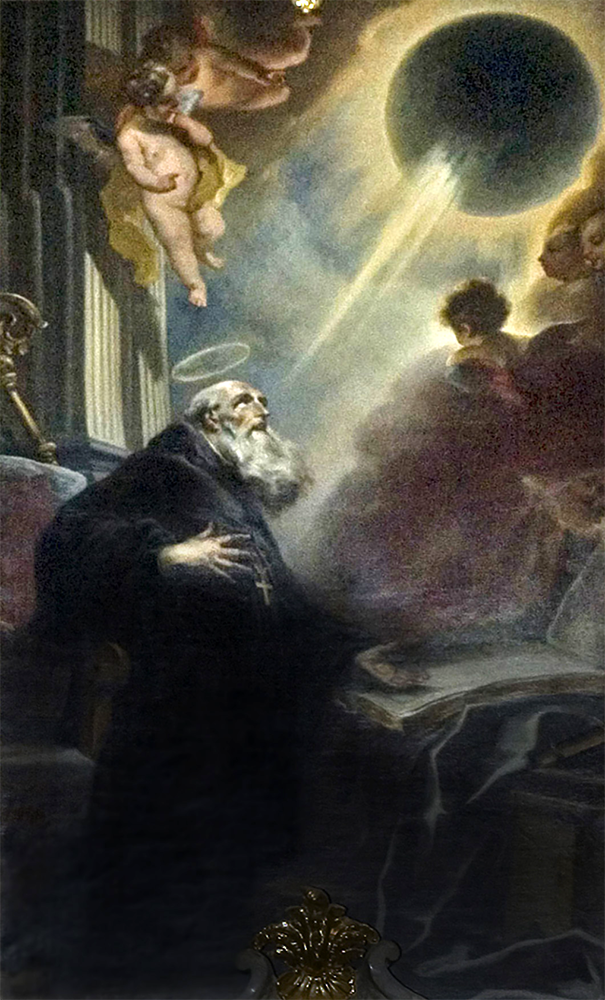
Renaissance
In 1519, Raphael, the great Renaissance master, created a fresco “Isaac and Rebecca Spied Upon by Abimelech” for a loggia at Vatican Palace. Here it is – the eclipse, again with the diamond ring effect. A very strong metaphor and a parallel to the situation of at that moment Isaac and Rebecca. Husband and wife had to pretend that they were brother and sister so that the Philistines (invaders from Philistine) wouldn’t kill them, but nature and instincts took over and they were making love while being spied upon by Abimelech (the king of Philistines).
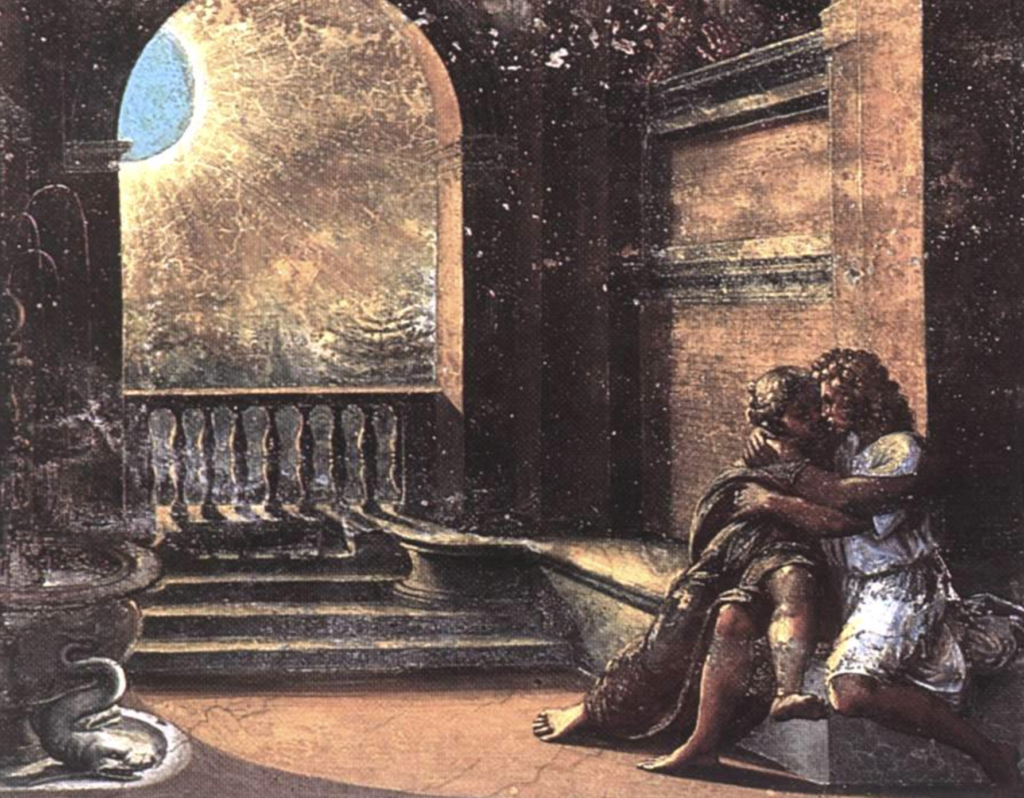
Medieval Insular Art Period
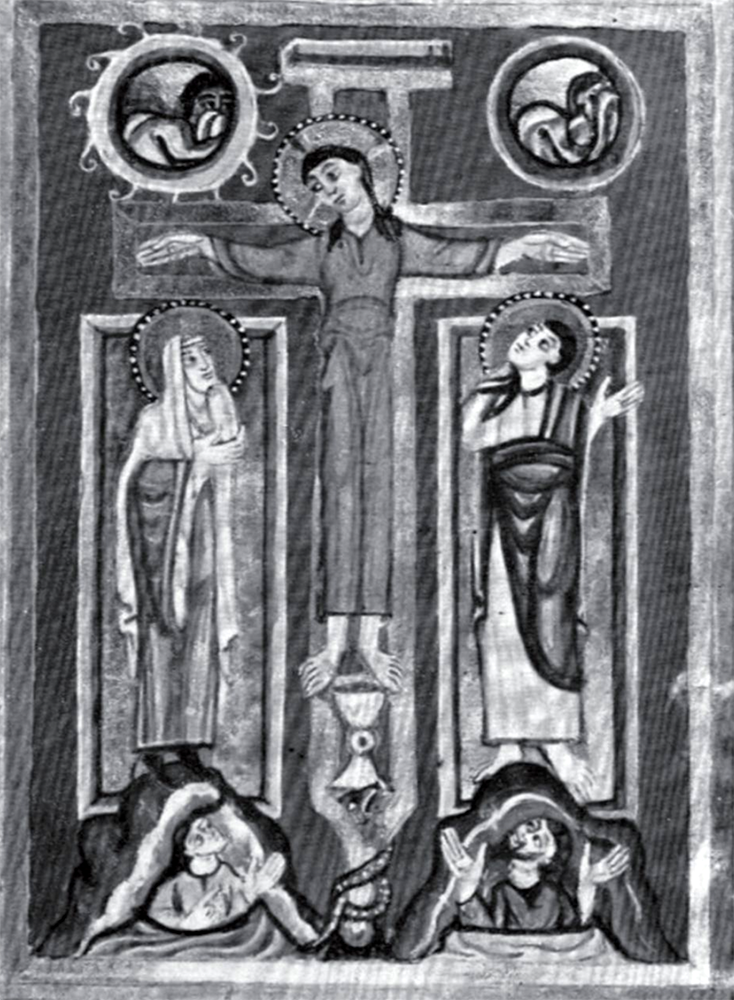
Russian Symbolism
Nicholas Roerich, Russian symbolist, has a solar eclipse in some of his paintings, including the “Prince Igor’s Campaign”. The painting was in 1942, a year when during World War II the battles unfolded in Stalingrad. The Soviet army was constantly forced by the Nazis to retreat. The painter was projecting his feelings on canvas hoping that the dark moon of nazism – even though covering the Soviet sun at the moment – will leave and the sun will be freed. The army in the painting is marching towards the East.
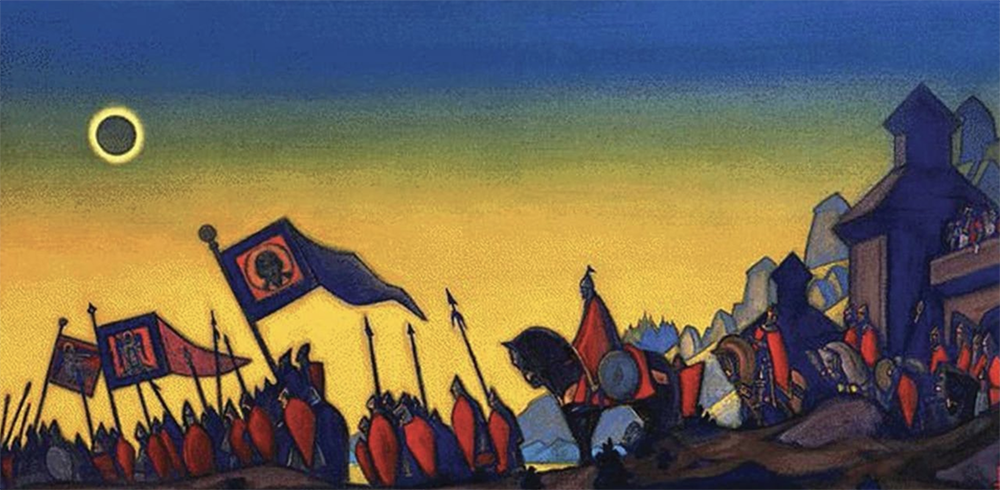
American Modernism
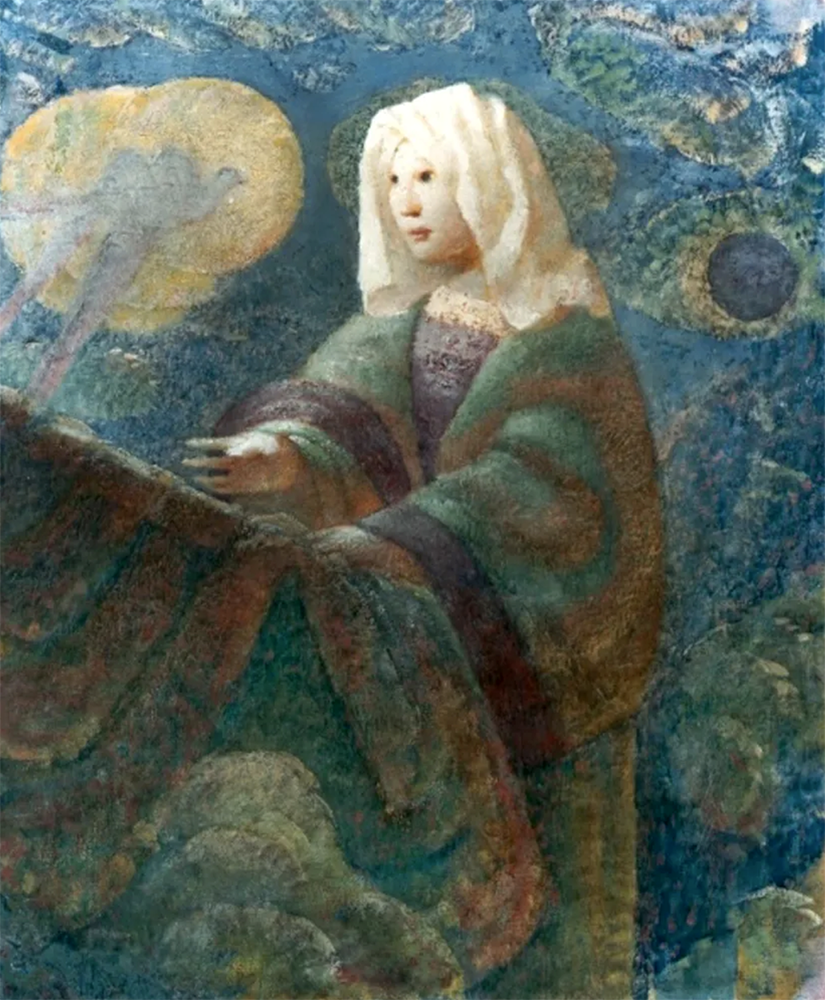
Eclipse As A Halo
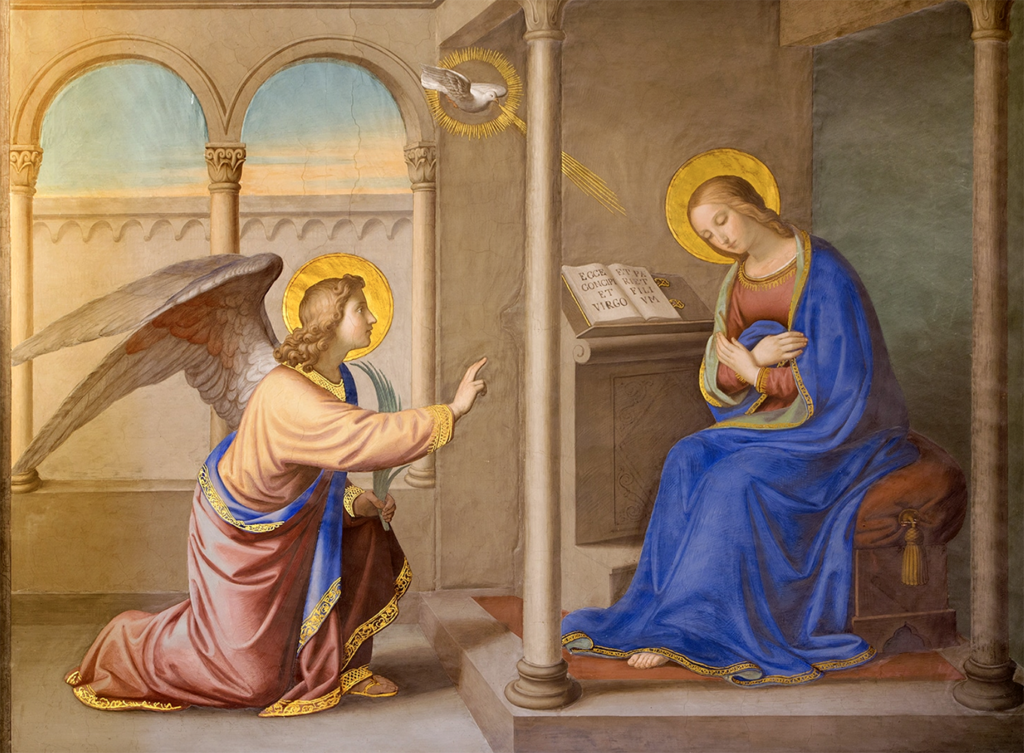

Dimitri ROSS
Dimitri Ross, a contemporary figurative visual artist, received the education in Liberal Arts and Religious studies in the USA, has formed his style and technique by studying Renaissance painting in Florence. Currently studies at the Sacred Art School Firenze in the Painting course by artist and professor Nacho Valdés. Lives in Florence, Italy.



